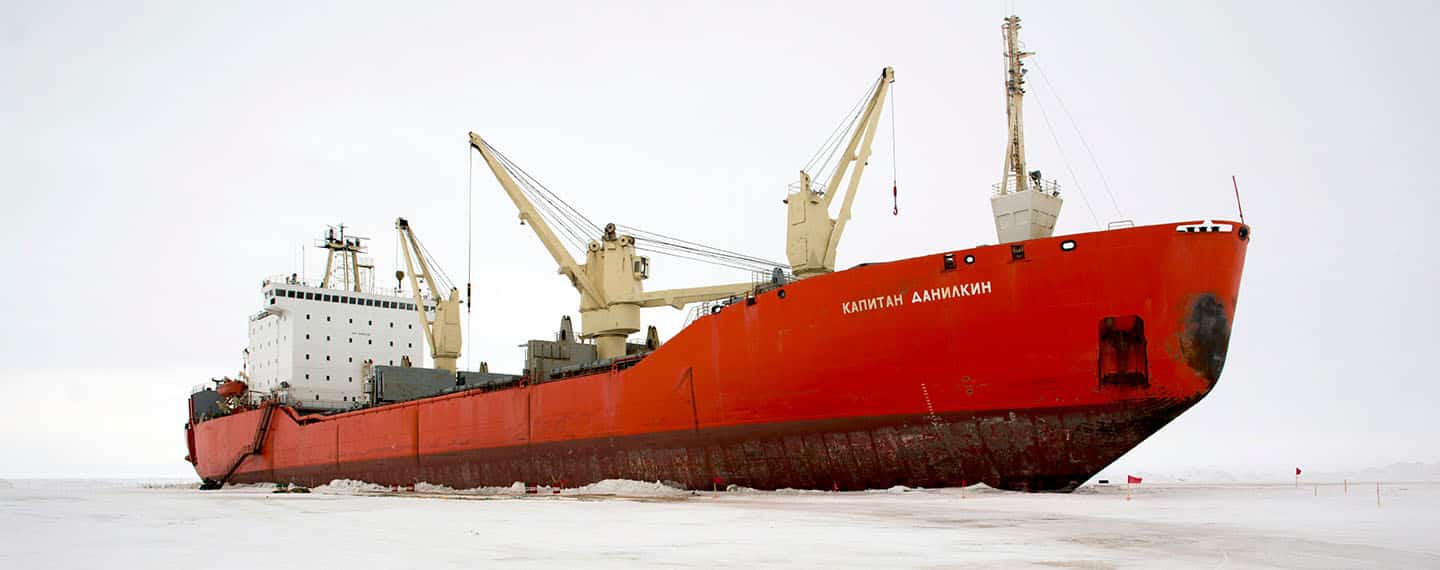In the 14th round of sanctions on Russia, the EU is studying a ban on transshipments of Russian liquefied natural gas (LNG) in European ports. The measure is intended to hamper the logistics of Russian gas exports from the Arctic, which during the winter months requires the use of ice-breaking LNG carriers. These ships, which are scarce due to their high production, maintenance and operating costs, deliver the LNG they carry to European ports for subsequent transport by conventional LNG carriers to the Asian market, especially China. The sanctions, therefore, do not reduce the volumes of natural gas supplied to the EU and should not have a significant impact on European benchmark prices. Yet it is a move that will reduce Russia’s export revenues and paves the way for a ban on Russian LNG imports to the EU by 2027, in line with the targets set out in REPowerEU.
Sanctions on LNG transshipment and access to technology impose a very high cost on Russia without significantly harming EU interests.
Why are transshipment services important?
From November to June, during the Arctic winter season, LNG that is exported from the Yamal project needs to use ice-breaking vessels to access international markets. The port where the Yamal LNG terminal is located, Sabetta, is inaccessible to conventional vessels during these months as it is surrounded by frozen waters. At present, there are only 15 icebreakers in operation, and they are mostly operated by Western shipping lines (OMV, Seapeak and Dynagas) that are well established, reputable and therefore compliant with international sanctions. To optimise the voyages of these specialised vessels, the natural gas they carry is transferred to conventional LNG tankers in warm water ports.
These transhipment services, essential for Russian LNG logistics, take place mainly in Zeebrugge, Belgium, and Montoir-de-Bretagne, France, in order to access the Asian market. In winter, permanent darkness and ice in the Arctic Ocean render it impossible for LNG tankers, even icebreakers, to reach Asian markets through the Bering Strait. This forces shipments to be re-routed through European ports servicing LNG from Yamal. Unlike crude oil transhipments, the technical specification of LNG transhipment operations means that they must be carried out in specialised ports.
As a result, Russian LNG exported to Asia during winter relies on EU port services specifically designed for these operations. Currently, Fluxys, the Belgian gas transport system operator, has a 20-year contract with Yamal LNG for gas transhipment at the Zeebrugge terminal, where a dedicated storage tank was built for Russian LNG operations in 2020. The Montoir-de-Bretagne terminal is also transhipping Yamal LNG through the ship-to-ship process under a 23-year contract signed by Engie that was subsequently inherited by France’s TotalEnergies. Although these are lucrative contracts for these ports, their termination would have limited implications for the EU gas market. Novatek, the operator of the Yamal LNG facility, previously conducted transhipment operations outside port facilities in Norwegian fjords and continues to do so in Russian waters north of Murmansk. However, these ship-to-ship operations require calm seas and weather and do not offer the same security as European port terminals.
Why are these sanctions effective?
The fact that Yamal LNG continues to flow to Asia, China in particular, even when the Northern Arctic Route is closed for the winter, underlines the importance of contractual destination restrictions, which oblige LNG cargoes to be physically delivered to the agreed port. This explains why even now most LNG tankers avoid passing through the Bab-el-Mandeb Strait: Russian cargoes from Yamal are making the longer and more costly journey via the Cape of Good Hope around Africa for deliveries to Asia.
Russia has built a floating terminal for such transshipments in Murmansk and Kamchatka, but US sanctions imposed on both projects in September 2023 appear to have delayed their entry into full operation. The US sanctions affect the companies operating the Murmansk floating terminal, which has prevented LNG tanker operators, mostly Western companies, from delivering or gathering LNG from the facility.
Banning transshipments in European ports will be especially disruptive for Russian LNG logistics and exports to Asia during next winter. This will be particularly relevant for Yamal LNG’s contract with CNPC, whose final destination is bound to be China. Both companies will have to renegotiate the contract and, foreseeably, sell part of the LNG output during the winter months on the European market, probably with significant discounts. Other offtakers in the Yamal project, although not contractually obliged to do so, exported part of the gas to the Asian market (SEFE, Gunvor, TotalEnergies and Shell). During the winter months they will also have to redirect these volumes to the European market. It is an open question whether LNG tanker operators will be willing to take greater risks and logistical constraints by resorting to transhipments in Russian waters.
Figure 1. Long-term supply LNG Yamal contracts
| Seller | Buyer | Volumes | Start | End | Clause | Notes |
| Yamal LNG | CNPC | 4,2 bcm | 2018 | 2038 | DES | Destination China |
| Gazprom Germania | 4,2 bcm | 2018 | 2038 | FOB | Inherited by SEFE, delivery at Zeebrugge for transshipment | |
| Naturgy | 3,5 bcm | 2018 | 2038 | DES | Destination Spain | |
| TotalEnergies | 5,6 bcm | 2018 | 2032 | FOB | ||
| Novatek Portfolio | TotalEnergies | 1,4 bcm | 2018 | 2041 | DES | Delivery at Montoir for transshipment, destination France |
| Gunvor | 0,7 bcm | 2018 | 2038 | FOB | ||
| Shell | 1,26 | 2018 | 2041 | FOB | Delivery at Montoir for transshipment |
In addition, Novatek is encountering problems in obtaining the services of new LNG carriers, both conventional and icebreakers, because of US sanctions. The latter have prevented the transfer of six icebreaking LNG carriers that were built at the Hanwha shipyard in South Korea. Novatek, together with Sovcomflot, had directly commissioned the construction of icebreaking LNG carriers from Russia’s Zvezda shipyard in collaboration with Samsung, which subsequently abandoned the project. Sanctions are also reportedly delaying commissioning by preventing access to key Western technology. France’s GTT and US-based General Electric, suppliers of some of the equipment for these LNG carriers, withdrew from Russia in 2023 because of the sanctions.
Sanctions on LNG transshipment and access to technology impose a very high cost on Russia without significantly harming EU interests. As recommended by the Agency of EU Energy Regulators, ACER, reductions in Russian LNG imports should be approached with caution, especially in light of the imminent expiry of the contract for Russian gas transit to Europe via Ukraine at the end of 2024. It seems more reasonable to focus efforts on limiting access to Western technology and transshipment services to Russian LNG companies, minimising the impact on the European natural gas market and maximising costs for Russian gas companies and Russian coffers.



